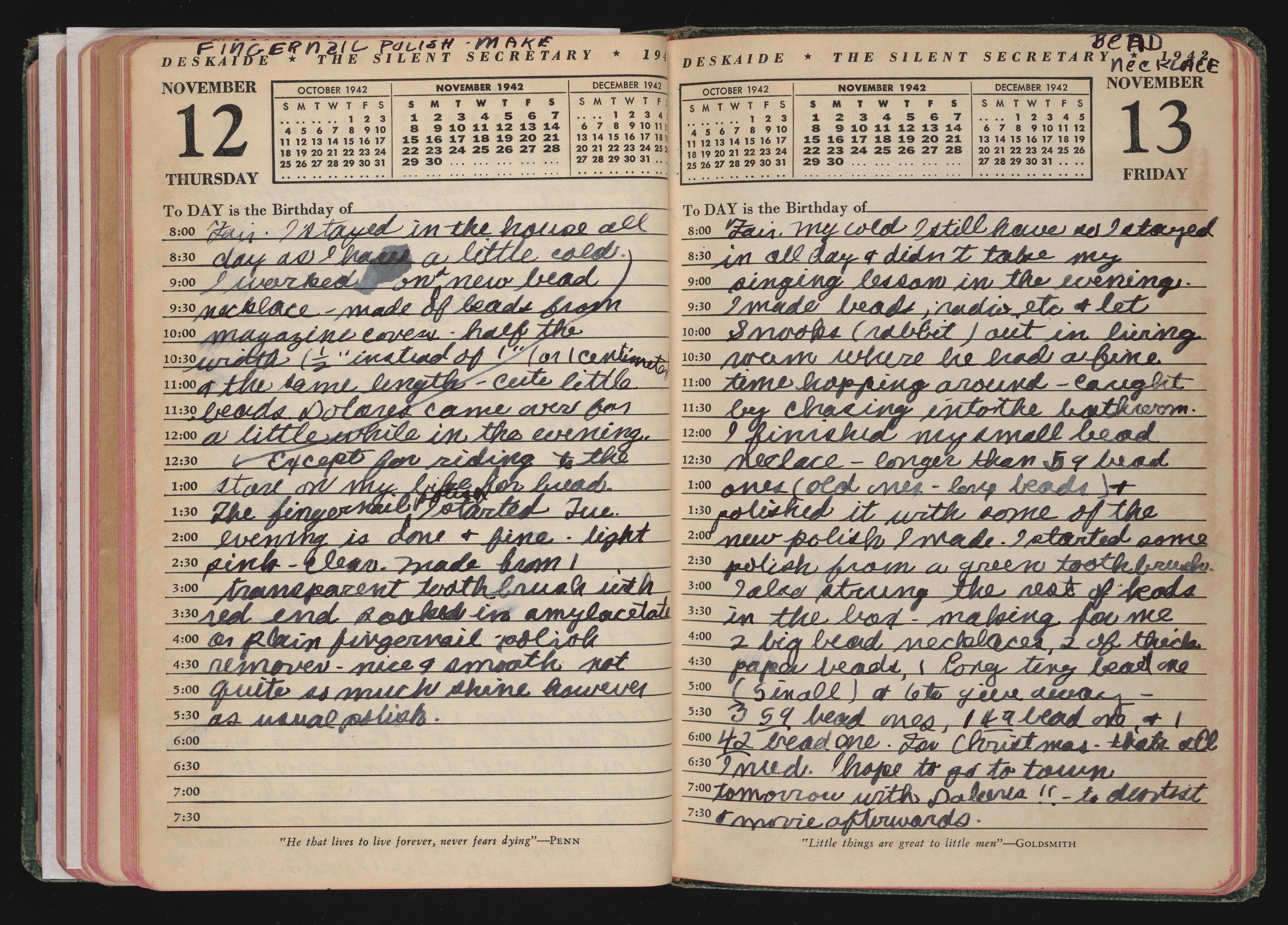Doris Holmes Blake (1892–1978) was an entomologist with the Smithsonian Institution from 1928 until her death in 1978. From 1933 onward, she worked without pay due to a new federal law that barred more than one family member from working in the federal government (her husband, Sidney Fay Blake, was a botanist with the Department of Agriculture). Despite this blow, she was at the top of her field, publishing ninety-seven papers and proposing twenty-five genera and 818 species groups. If you are interested in reading more about Doris Holmes Blake, dive into a recent blog post about her career.
This post concerns the relationship between Doris Holmes Blake and her daughter, Doris Sidney Blake (1928–1974). It is widely acknowledged that the lives of women throughout history are not well-represented in the historical record. Yet, almost daily letters between mother and daughter from the middle of the 20th century shed light on questions I was always curious about, but which seemed too mundane to ask aloud: How did people live their daily lives? What did they eat? What did they do for fun? What did they worry about?
These letters, along with Doris Sidney Blake’s high school diary, provide many answers to these questions. I could not help but compare my own experiences as an adolescent in high school and college with those of Doris Sidney Blake, as her letters and diary entries contain highly detailed descriptions of daily life and her views on the world around her.
I concluded that while some behaviors and activities seemed completely foreign to me, there were also passages that brought a smile to my face as I could immediately relate to what she was writing about.
Let’s start with things that are different. Doris Sidney Blake was a teenager during World War II. Her diaries offer a fascinating window into life at that time, through the eyes of a young woman who had the cares and viewpoints someone her age may have today. For example, she sprinkled her reactions in real time about various important events in World War II that we would recognize today (such as the Japanese attack on Pearl Harbor, the Allies invading Normandy on D-Day, and Franklin Delano Roosevelt’s death), yet in the very next paragraph she mentioned the dress her mother bought her. As commodities like clothes and beauty products were not as common as they are today, she also summarized the outcomes of various “Do-It-Yourself” projects, such as knitting a sweater and mixing her own nail polish. It’s such a strange juxtaposition of landmark world events combined with the mundane details of a teenage girl’s daily life that really made me a fan of this collection.
Now let’s talk about similarities. Following the war, Doris Sidney Blake attended Radcliffe College and wrote to her mother on a near daily basis. The troubles, concerns, and interests that she relayed home were all too familiar to me. She, like so many before and after her, discovered that adjusting to college life has a learning curve: adapting to living on one’s own, navigating new friendships and dating, blowing through your budget, and needing to ask your parents for money. On top of all that, there were the actual stresses of schoolwork itself! The letters also reveal the effects the social norms of the time had on women, and Doris Sidney explained all these topics to her mother in stunning detail. In many cases, we have Doris Holmes’ responses written in the firm, but loving tone of a mother trying to steer her daughter towards academic and personal success.

In all my years as an archives professional, I have never come across a collection that was so relatable to my own experience. We invite you to dive into Doris Holmes Blake’s correspondence, which are now available for you to transcribe through the Smithsonian Transcription Center. I hope you enjoy and love the collection as much as I do!
Related Collections
- Doris Holmes Blake Papers, 1899-1985, Record Unit 7310, Smithsonian Institution Archives
Related Resources
- “Doris Holmes Blake and Her Natural History,” by Tatiana Swann, The Bigger Picture, Smithsonian Institution Archives
- Smithsonian Institution Archives projects, Smithsonian Transcription Center
Produced by the Smithsonian Institution Archives. For copyright questions, please see the Terms of Use.





Leave a Comment